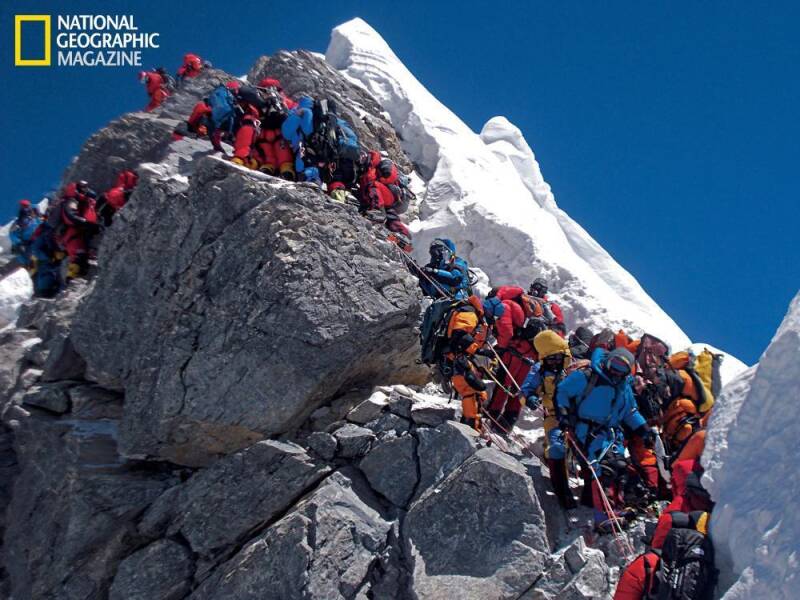Rest going well, we’re getting our money’s worth at the breakfast buffet each day and making excellent use of the pool and the spa but rather than this now be a blog of me on holiday within an expedition I’m going to take the next few days to just give you a little more information about what’s involved in climbing Mt Everest and its adjacent mountain Lhotse and today I’ll start with ‘Permits & Rope Fixing’.
To climb any of the 8,000M+ mountains in the Himalayas and most of the other ones you need to obtain a permit to climb from the Nepalese Mountain Authority, our guide company takes care of this as part of our package but the permit alone costs around $11,000 per person per mountain with Everest being the most expensive and the costs reduces for other mountains, this season this has generated around $3.8 million to the authorities.
In 2021, a record number of 408 permits were issued and the issue with this is that through the icefall it doesn’t take many climbers to create a bottleneck and long delay as obstacles are navigated up and down which can result in long amounts of time standing around waiting to move which in temperatures dropping to below -30 degrees in some cases can go from being quite uncomfortable to life threatening very quickly.
So far reports are that permits have been issued for 889 climbers from 74 countries for 25 peaks across the Himalayas. For Everest only, the US has the largest representation with 64 members, followed by the UK with 34, Nepal (non-Sherpas) 21, India 23, Canada 17, Russia 17, France 13, China 14 and Austria with 11. Thirty seven other countries are represented by one or two climbers. In the Elite team we have climbers from UK, Australia, Poland, Bulgaria, Mexico, South Africa, Austria, France, Sweden, Nepal, Ecuador, Saudi Arabia, Qatar. This doesn’t include the guides, porters, Sherpas or other high-altitude workers that are needed to get the paying climbers up to the summits. (*Info from Alan Annette’s blog dated 1st May).
The rope fixing team fixes the fixed lines up to the summit that all teams then follow up, its a collective effort that everyone relies on and providers a fair amount of anxiety for guides and climbers as everyone waits on progress reports to know where they are up to so that each team can plan their own summit attempts, currently it looks scheduled to reach the Everest summit on 10th May, subject to weather but we await for confirmation and then our Sherpa teams will start to move our equipment, tents and importantly oxygen up the mountain to be placed at strategic points and camps as needed. the rope fixing team this year is being led by Kami Rita Sherpa who has summited 25 times and holds the record for most summits so I’m hoping the rope fixing goes as planned.


Add comment
Comments